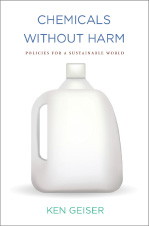Publications
Materials Matter
Towards a Sustainable Materials Policy
2001
Materials Matter takes a hard look at the remarkable history of America’s industrial materials and the efforts of citizens, professionals and governments made to address the health hazards and environmental damages that came with those developments. The book addresses the toxicity of industrial materials, the depletion of natural resources and the dissipation of material wastes and argues that the safest and least costly point at which to prevent environmental damage from material production and disposal is when materials are first designed and selected for industrial use. Recognizing the limited effectiveness of past government policies, the book argues for more ecologically-compatible policies focused on detoxification and dematerialization. The possibilities inherent in materials recycling, and reuse, new and advanced materials, renewable resources, bio-based materials, and green chemistry are examined as avenues for the development of a more sustainable materials economy.
Available from MIT Press
Chemicals without Harm
Policies for a Sustainable World
2015
Chemicals without Harm proposes a broad and comprehensive chemicals strategy for converting the chemicals economy. The argument begins with an examination of past government policies to control chemicals and argues that these policies were compromised by economic, procedural, political and implementation issues. The text moves on to present an analysis of emerging government initiatives outside the United States that represent a new wave of chemicals policies built on a new set of assumptions and capacities. Arguing that the solution to the chemicals problem lies in reframing the problem, a systems view of chemicals production and consumption is used to identify general principles for a more comprehensive, hazard-based and transformative policy framework. The text examines three major strategic fronts that are advancing the conversion of the current systems of chemical production and consumption towards safer chemicals. The chapters that follow develop a safer chemicals policy framework that include processes for characterizing, classifying and prioritizing chemicals; generating and using new chemical information; promoting transitions to safer chemicals, and developing safer alternatives. While the book examines opportunities for both business and non-government initiatives, it closes by considering the potential role for government in advancing these policies.
Available from MIT Press



